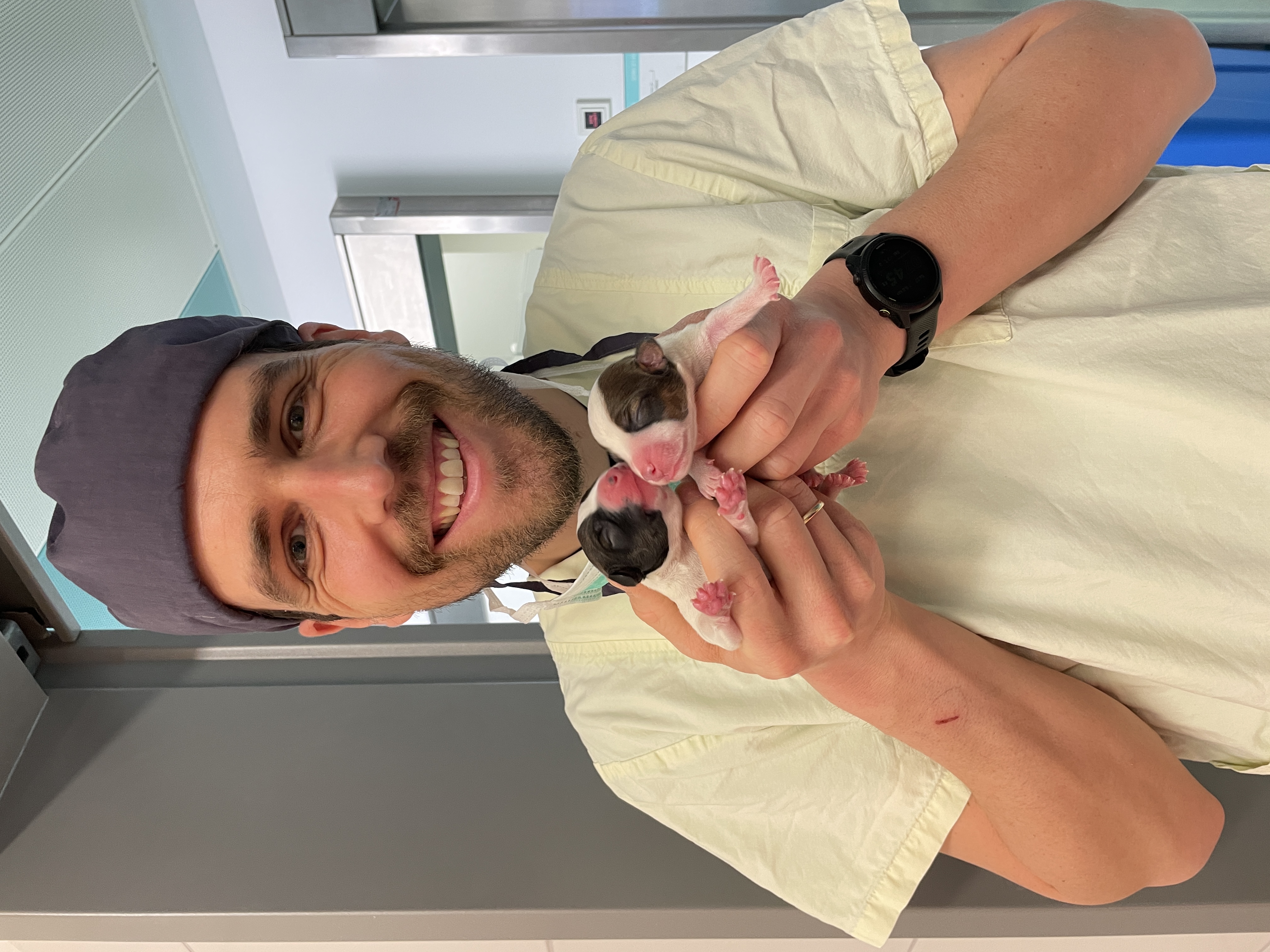June/July 2025
Campoy L. Development of Enhanced Recovery After Surgery (ERAS) protocols in veterinary medicine through a one-health approach: the role of anesthesia and locoregional techniques. Journal of the American Veterinary Medical Association. 2022 Sep 15;260(14):1751–9
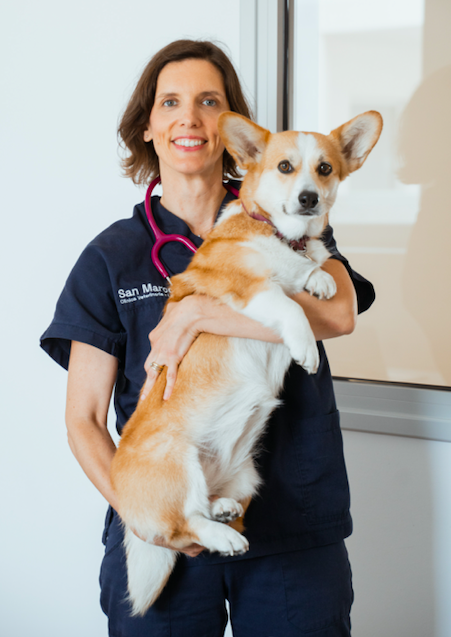
Recommended by: Elisa Bortolami
Elisa became a European Specialist in Veterinary Anesthesia and Analgesia in 2013 and is currently the coordinator of the Anaesthesia and Analgesia Department at San Marco Veterinary Clinic in Italy.
She graduated from the University of Padua and then moved to the UK, where she completed a rotating internship, followed by a residency at the University of Bristol. She went on to pursue further education, earning both a PhD and a MSc. Elisa enjoys all aspects of veterinary anaesthesia, with a particular interest in pain management. In her free time, she enjoys spending time with her family—especially outdoors.
Commentary
This article discusses the development of Enhanced Recovery After Surgery (ERAS) protocols in veterinary medicine, reflecting similar advancements in human healthcare. ERAS aims to improve patient outcomes by re-evaluating preoperative, intraoperative, and postoperative care. Locoregional anesthetic techniques play a key role, offering effective pain management while potentially reducing the need for systemic analgesics, shortening hospital stays, and lowering costs. The article emphasizes the importance of careful patient selection, clear client communication, and the use of short-acting anesthetic drugs to optimize care. It explores various locoregional techniques for specific surgeries, such as pelvic limb and abdominal procedures, highlighting the advantages of ultrasound guidance and newer fascial plane blocks. The author concludes by advocating for increased training in locoregional anesthesia to support the broader adoption of ERAS protocols in veterinary practice.
As a veterinary anesthesiologist working in a busy clinical setting, I chose this article because it directly addresses a growing need in our field: optimizing patient outcomes through ERAS protocols. I am constantly seeking ways to improve pain management, enhance patient welfare during hospitalization, and shorten recovery times. This article offers a valuable overview of how locoregional techniques can be strategically integrated into surgical plans, with concrete examples for common procedures. In conclusion, I believe that the ERAS approach aligns closely with my commitment to providing the best possible care for veterinary patients.
May 2025
Langer, T., Brusatori, S. & Gattinoni, L. Understanding base excess (BE): merits and pitfalls. Intensive Care Med 48, 1080–1083 (2022). https://doi.org/10.1007/s00134-022-06748-4

Recommended by: Gerardo Citarella
Gerardo Citarella earned his Master's degree in Veterinary Medicine from Aldo Moro University in Bari, Italy, in 2018. He then completed a rotating internship in Naples before undertaking his residency in Zurich. He became a diplomate in 2024 and is now working as the head of the anaesthesia service at the Ennetseeklinik, Evidensia, in Zug, Switzerland.
When not working, he enjoys spending his free time with his family and pursuing his passions for guitar, running, boxing, cooking, traveling, hiking, skiing, humanitarian missions, and simply living life to the fullest.
Commentary
I chose this article because I believe it is an important vehicle for understanding the concept of base excess (BE). Acid-base equilibrium has always aroused spicy curiosity in me and every time I sit down to reflect on the caridian concepts of understanding acid base equilibrium, I always come to reshape my view of the same topic. In my little experience, I have several times noticed how the concept of BE can cause doubts and difficulties in understanding. This article clarifies, but does not simplify the theories on BE from Professor Siggaard-Andersen (inventor of the BE concept), re-proposing them from a critical and analytical perspective. Above all, the article makes it possible to understand what lies behind the BE concept without having to resort and read Prof. Andersen's nomograms. The last author of this article, Professor Luciano Gattinoni, who deceased three months ago, represents a giant of our profession. Known to many for his revolutionary discoveries in the field of ventilation, he was also a profound expert of acid base equilibrium as well as a refined physiologist. The title of this article I believe best exemplifies his way of seeing the profession of anaesthetist and that is with the word "Understanding" at the base of everything. Happy reading!!
April 2025
Loomes K, Louro LF. Recovery of horses from general anaesthesia: A systematic review (2000-2020) of risk factors and influence of interventions during the recovery period. Equine Vet J. 2022; 54: 201–218. https://doi.org/10.1111/evj.13517
Recommended by: Stephan Neudeck
Stephan Neudeck has been a Diplomate of the ECVAA since December 2022 and has worked at the Small Animal Clinic of the University of Veterinary Medicine Hannover since April 2021. Prior to this, he worked at the Equine Clinic of the same university from 2016 onward. His scientific focus areas include general anaesthesia, macro- and microperfusion alterations in various diseases, glycocalyx shedding, as well as endotoxemia and sepsis. He has gained extensive experience in his primary fields of work, the anaesthesia and critical care departments. In his free time, Stephan enjoys spending time with his wife and two children. Their family life is well-balanced by the presence of their two dogs and horse.
Commentary
I came across this systematic review during my study period for the exams. I particularly like this review because it provides us with basic information and answers to various questions on how to improve the recovery phase. Additionally, this review serves as good literature for the training of residents and specialist veterinarians.
It provides a comprehensive overview of the current evidence on risk factors and interventions influencing the quality of recovery in horses after general anesthesia. The authors have conducted an extensive literature search and critically evaluated 39 studies to identify factors that impact recovery quality, including anesthesia duration, American Society of Anesthesiologists (ASA) physical status, and surgical procedure. The review also highlights the importance of pharmacological interventions, such as the administration of alpha-2 adrenoceptor agonists, in improving recovery quality. The findings of this review will be valuable for equine anesthesiologists and veterinarians seeking to optimize recovery outcomes in horses undergoing general anesthesia.
March 2025
Mealey, K. L., Owens, J. G., & Freeman, E. (2023). Canine and feline P-glycoprotein deficiency: What we know and where we need to go. Journal of Veterinary Pharmacology and Therapeutics, 46, 1–16.

Recommended by: Ivana Calice
Ivana became a diplomate in 2022 and is currently working at the Anaesthesia Unit of Vetmeduni Vienna. Originally from Serbia, shebegan her veterinary studies in Belgrade and completed them in Vienna, where she also finished her residency after working in industry and private practice for some time.
She enjoys anaesthesia involving airway management, particularly in head, neck, and thoracic surgeries, as well as all forms of regional anesthesia. Her current research focuses on interventional pain medicine in dogs. Outside of work, she does her best to juggle life as a mum of two teenagers and enjoys listening to podcasts, when she finds a moment to do so.
Commentary
I came across this review while preparing for a resident round, and I found it really interesting. The topic itself isn’t new, but it makes it clear that we can no longer think about it simply in terms of whether an animal has a gene mutation or not. Even though the review doesn’t focus specifically on anesthetic drugs, I think it’s still very relevant to our work since we often deal with animals that have P-glycoprotein (P-gp) deficiency or dysfunction.
What I really liked about this review is that it highlights species differences and knowledge gaps in dogs, cats, and humans when it comes to P-gp. Understanding these differences is important, especially when considering different drugs and safety.
Additionally, I appreciate the review’s use of clear terminology, referring to "P-glycoprotein deficiency and dysfunction" rather than solely discussing the presence of the MDR1 (ABCB1) gene mutation. This distinction is clinically relevant, as it shifts the focus from genetic status to the functional consequences of P-gp impairment. This approach may also facilitate better communication with clients. It’s not uncommon for owners to say their dog is “MDR1-positive”, but that can be confusing—even for us. Does it mean the dog has the mutation and is P-gp deficient? Or does it mean the dog is unaffected? Using terms like "having" or "not having P-glycoprotein deficiency" could make things a lot clearer when taking a history and, in turn, help us provide safer anesthesia.
February 2025
Effects of dexmedetomidine on perioperative stress, inflammation, and immune function: systematic review and meta-analysis Wang, Kun et al. British Journal of Anaesthesia, Volume 123, Issue 6, 777 - 794
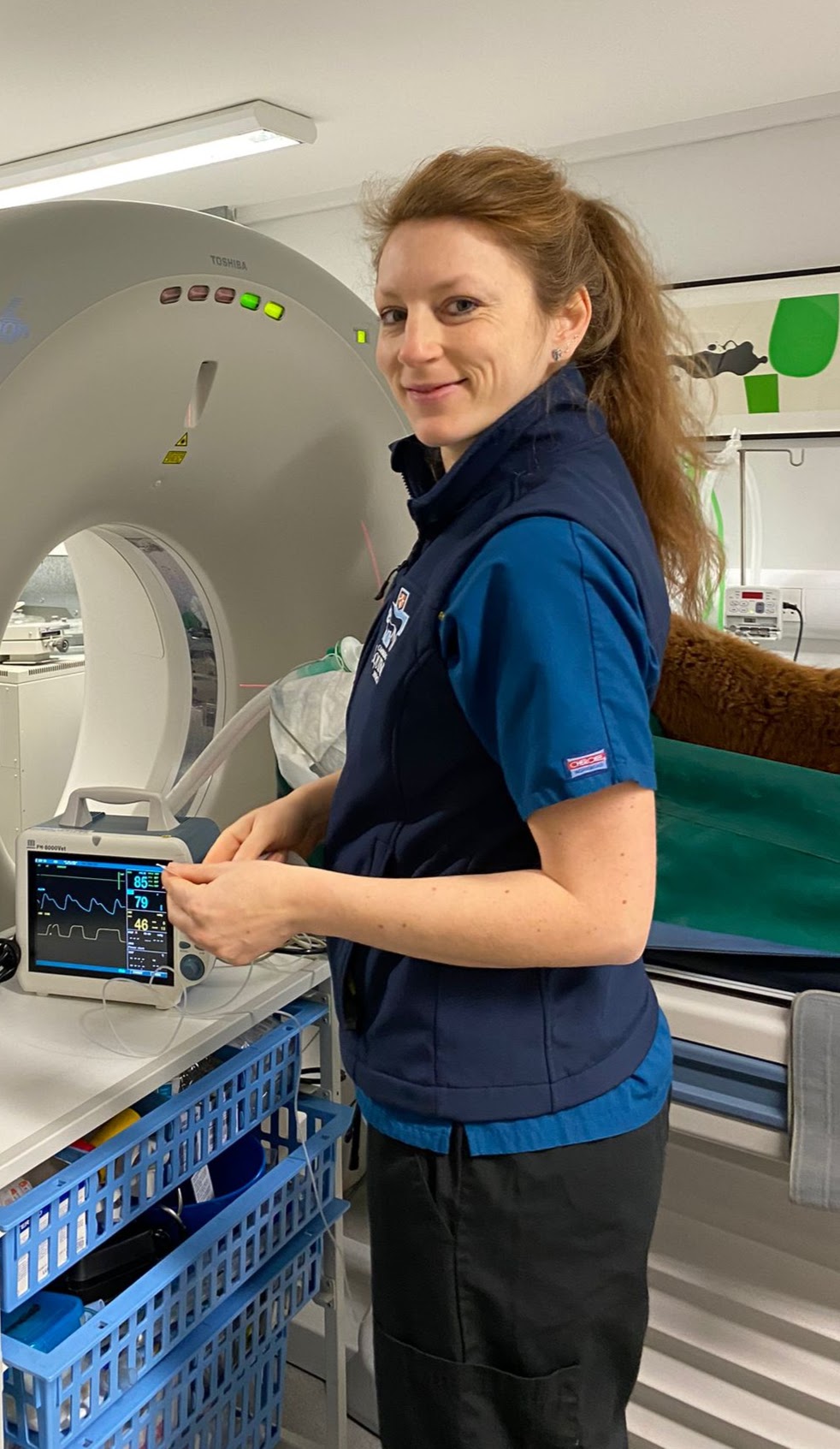
Recommended by: Malina Filipas
Originally from Romania, Malina worked in both first opinion and referral practice in the UK before undertaking a residency at the University of Cambridge and passing the exam last year. She particularly enjoys farm animal anaesthesia, mechanical ventilation and critical care. When not in work, you'll find her either tending to her indoor plants, in the garden, or out and about with my lovely Wirehaired Vizsla Maisie who seems to enjoy camping more than she does.
Commentary
I came across this review during my revision time when instead of focusing on the curriculum, I entered the rabbit hole that is dexmedetomidine and its effects. We obviously do not know everything there is to know about this interesting molecule and we are constantly learning new ways in which to use it. This review not only highlights a potential anti-inflammatory and attenuating effect on perioperative stress when given as a constant rate infusion (which maybe isn't as surprising knowing its sympatholytic effects) but seems to enhance the immune function. These benefits may contribute to a reduction in postoperative complications for surgical patients. I would be excited to see if these effects actually translate in better clinical outcomes, but until such evidence emerges, I shall continue adding it to my protocols for all its other benefits.
January 2025
Mosing, M. and Senior, J.M. (2018), Maintenance of equine anaesthesia over the last 50 years: Controlled inhalation of volatile anaesthetics and pulmonary ventilation. Equine Vet J, 50: 282-291. https://doi.org/10.1111/evj.12793
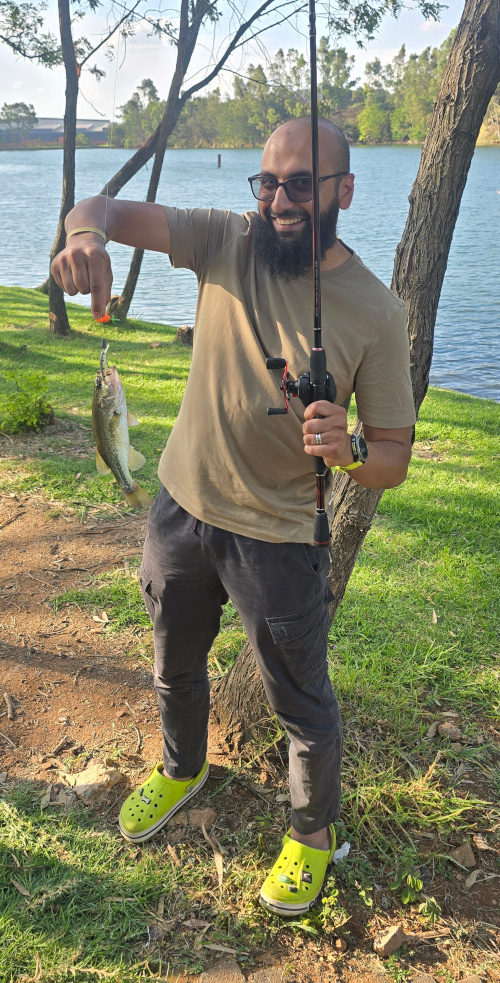
Recommended by: Abdur Kadwa
Abdur became a diplomate of the ECVAA at the end of 2022 and is currently working at the Onderstepoort Veterinary Academic Hospital at the University of Pretoria Faculty of Veterinary Science. He completed his undergrad, internship and residency at the same facility (peril of being the only vet school in the country!). He particularly enjoys cardiothoracic anaesthesia and acid-base physiology. During his time off, he tries his best to keep up with his 2 sons and his daughter, travelling with his wife and fishing.
Commentary
I came across this review ' Maintenance of equine anaesthesia over the last 50 years: Controlled inhalation of volatile anaesthetics and pulmonary ventilation' during my residency, whilst preparing for one of our bi-weekly discussions, this time concerning equine ventilation. In this review, Profs Mosing and Senior (both well known names in the fields of equine anaesthesia and mechanical ventilation) succinctly discuss the history of inhalational anaesthesia in horses as it is relevant to modern equine anaesthesia. The relevant pharmacokinetics and -dynamics of modern inhalational anaesthetic drugs are briefly compared after which the review segues into mechanical ventilation of the horse. The relevant anatomy and physiology relevant to mechanical ventilation is described, including the physiological effects of ventilation, followed by various ventilation techniques and modes. The review concludes by suggesting what the next 50 years of equine anaesthesia might bring forth.
The authors have gathered information regarding equine anaesthesia, spanning the last half century and have presented the relevant 'highlights', so to speak. I suggest this review to anyone involved in equine anaesthesia, from a new resident to the time-pressed exam candidate. Personally, I find the review framework useful for discussing mechanical ventilation in horses with residents, both at the patient side or during formal discussion sessions.
Past Reviews
December 2024
Savvas et al. (2021) Evaluation of the effect of the inspired oxygen fraction on blood oxygenation during inhalant anaesthesia in horses: A systematic review with meta-analysis. Animals, 11(8), 2245.
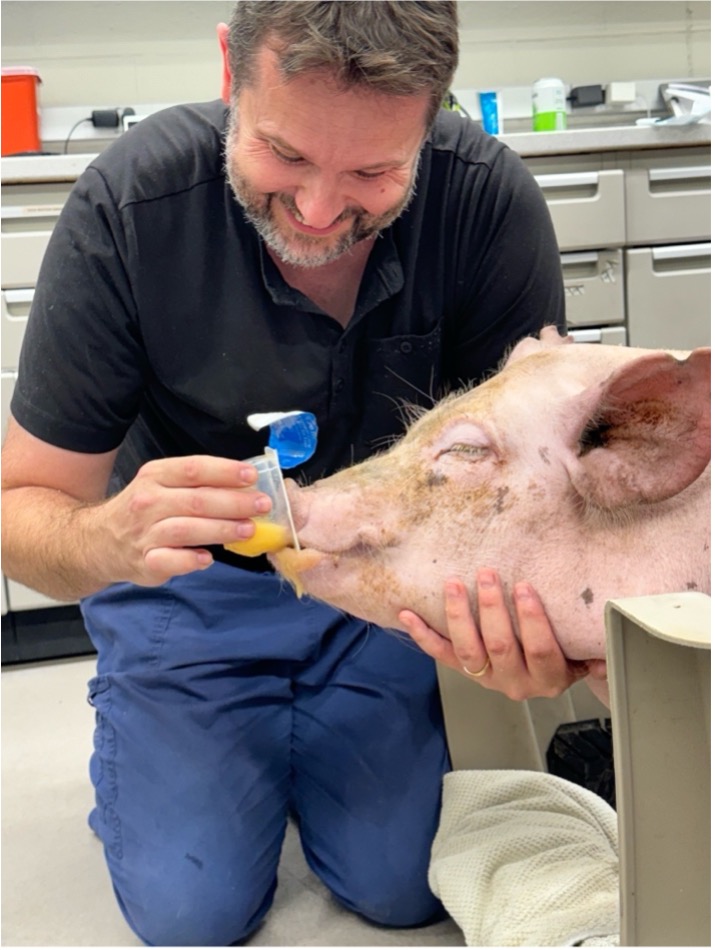
Recommended by: Klaus Hopster
Klaus became an ECVCAA diplomate in 2012. Upon finishing his training, he worked as a Lecturer in Anesthesia and Pain Management at the Hannover School of Veterinary Medicine's Equine Hospital until his departure to the University of Pennsylvania in 2016. His main research focus is on intraoperative lung function and tissue oxygenation under general anesthesia. In his free time he enjoys spending time with his dogs and horses on his little farm in rural Chester County Pennsylvania.
Commentary
I read this review article at least once every year. Authors evaluate the effects of different inspired oxygen fractions (FIO2) on blood oxygenation in horses during inhalant anesthesia. The study aims to determine whether lower FIO2 levels (<0.6) improve oxygenation indices compared to higher levels (>0.8). Five studies, including four experimental and one clinical, were reviewed, with a meta-analysis performed on the experimental studies. The findings revealed that lower FIO2 levels significantly reduced arterial oxygen partial pressure (PaO2) but also decreased the alveolar-to-arterial oxygen tension difference (P(A-a)O2), indicating improved gas exchange. In contrast, high FIO2 increased PaO2 but compromised pulmonary function by worsening P(A-a)O2. Data limitations prevented meta-analysis for some indices, such as the PaO2/FIO2 ratio. The review concluded that while high FIO2 raises PaO2, it can impair pulmonary function, whereas lower FIO2 improves gas exchange but reduces overall oxygenation.
It reminds me of the dire need for further research to refine oxygenation strategies in clinical practice.
November 2024
Opioids Regulate the Immune System: Focusing on Macrophages and Their Organelles

Recommended by: Manuela Pascal
Manuela is originally from Romania where she has worked for a good part of her career and spent time in the University in Bucharest. She became a Diplomate in June 2021 when the world started to recover from the pandemic after finishing her residency at the Animal Health Trust, UK. She has been working since in several referral practices in UK and enjoys delivering CPD and anaesthesia training to interns, residents, and nurses.
She enjoys all aspects of anaesthesia, but she has a particular interest in cardio-pulmonary by-pass, critically ill patients, sepsis, and opioid-free anaesthesia.
Outside work she enjoys spending time in her garden and reading anything that comes across. I am now following my second dream of being a maths scientist and trying to understand why 2+2 might not always be equal to 4.
Commentary
I chose this review as it has always fascinated (and scared) me how science evolves, especially related to drug interactions with our body system. Opioids remain one of the most frequent drugs in anaesthesia and have been studied extensively. However, their effect on the immune system and role in cancer biology are not the first ones to come to mind in the daily practice. This review summarized the latest evidence regarding effects of opioids on macrophage function in the last 20 years. It is well written and an easy read, while providing a base for further research. Its findings might contribute to the big debate around opioid free anaesthesia.
October 2024
Obstructive Lung Disease - Anesthesia and Critical Care Reviews and Commentary (ACCRAC)
Recommended by: Jodie Hughes
I became a Diplomate in 2019 after completing a residency at the University of Liverpool and am now working in a private referral hospital in the south of England. Outside of work I love travelling, scuba diving and knitting. I am trying to enjoy renovating my house.
Commentary
I came across this podcast when studying for my ECVAA exams. It is a fantastic resource for revision and I still enjoy listening to it now. The podcast is created by Jed Wolpaw, an associate professor in anesthesia and critical care medicine at Johns Hopkins University School of Medicine. His aim is to provide accessible reviews of anaesthesia and critical care topics, he most definitely achieves this. Jed is incredibly engaging and gives great tips for understanding and remembering the topics covered. I’ve selected an older episode here which really cemented for me an understanding of spirometry loops. The podcast is free to listen to, I hope you enjoy.
September 2024
Neuromuscular block management: evidence-based principles and practice. Rodney, G. et al. BJA Education (2024),24(1),13-22
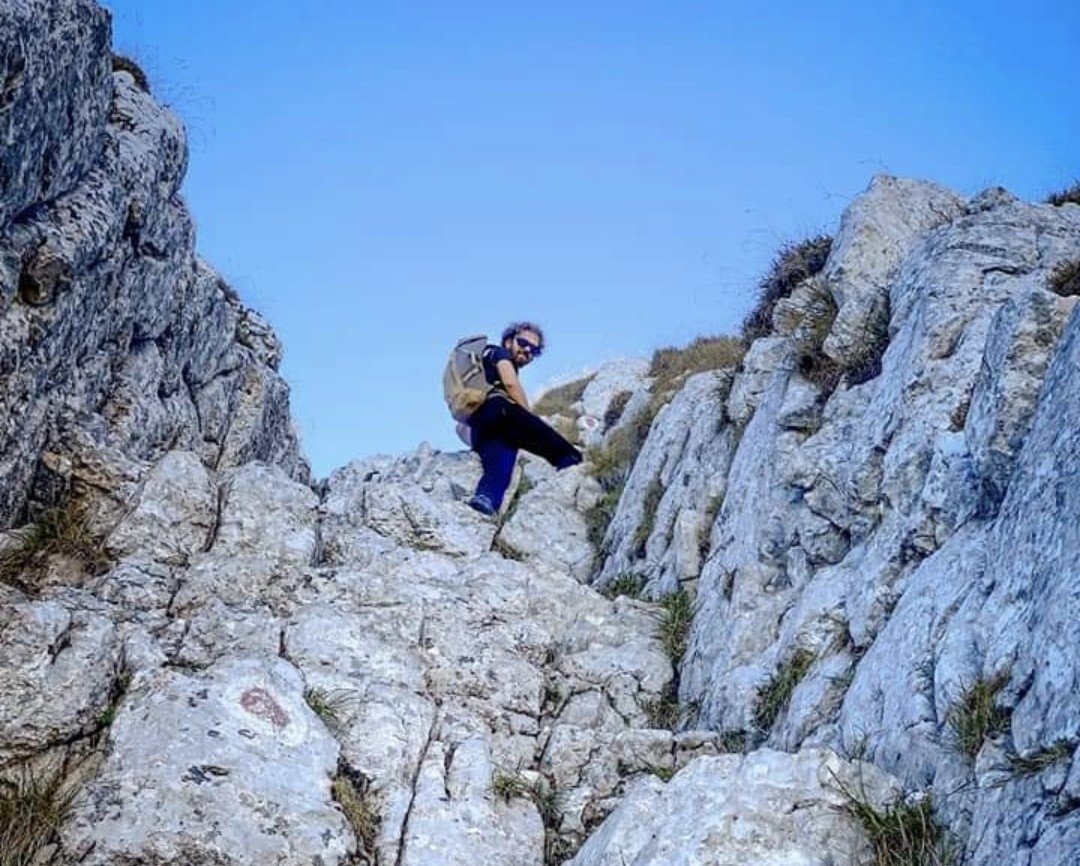
Recommended by: Alexandru Tutunaru
Alex became a diplomate in 2022 and is currently working as a senior anaesthetist at the small animal hospital of the University of Liège. He is heavily involved in the teaching of interns and residents and provides CPD (Continuing Professional Development) in anaesthesia and intensive care in his home country, Romania. His main interests in anaesthesia include the use of neuromuscular blocking agents and anaesthesia for oncology patients. In his free time, Alex enjoys taking care of his two children and loves hiking in the mountains.
Commentary
Neuromuscular blocking agents (NMBAs) were first used and documented in anaesthesia in 1942 by R. Griffit, more than 400 years after the Europeans discovered them being used by the indigenous in South America, and 100 years after they were tested on animals and their properties described. However, even though “the start was missed”, nowadays NMBAs are routinely used in human anaesthesia to ease intubation. However, In veterinary medicine their use is still limited to intraocular, intrathoracic and specific orthopaedic procedures. This review article provides you with an up-to-date definition of neuromuscular block depth, pharmacological variability of NMBAs and reversal therapies, the consequences of residual block and its prevention, and the differences between acceleromyography and electromyography. I hope this might spark your curiosity to read it.
August 2024
The failed peripheral nerve block by Bottomley, Gadsden and West. BJA Education, 23(3): 92e100 (2023)
Recommended by: Ian Self, Vice President ECVAA
Ian Self has been a practising Diplomate for several years having worked in private practice and academic institutions. He is continually fascinated by his patients and the ways they never quite do what you think they should do- he guesses they haven't read the textbooks! Increasingly, he is interested in how students, under- or post-graduates learn, so much so that he is carrying out a PhD study examining attitudes to lifelong learning in the veterinary profession which leaves little time for his twin hobbies of boating and tai chi.
Commentary
Just last week, I performed two peripheral nerve blocks whilst on clinics. One, a subscalenic block in a dog presented for forelimb surgery, worked beautifully, with the patient virtually awake throughout surgery. But on recovery I noticed an ipsilateral Horner's Syndrome - difficult to explain that one to the owner but luckily signs resolved as soon as the bupivicaine wore off. The next block, a couple of days later, was a fairly straightforward femoral/sciatic for TPLO surgery. I had great ultrasound visualisation and saw the local anaesthetic spread around the nerves. But of course, the dog required lots and lots of rescue analgesia despite my confidence that the block was placed correctly. This got me thinking about how we measure block success (reaction to surgery?) and how we approach the failed block situation.
The human review I have highlighted, although basic, I found to be very useful in asking the right questions about blocks and how to approach the 'what now' following block failure. I hope you find it an interesting read.
June/July 2024
End Tidal CO2; Roadside to Resus Podcast
Recommended by: Matt Gurney, Past President ECVAA
Outside of work, I love travelling and in particular visiting the wine regions of the world. In this photo I am braving the rain showers on a trip to one of our excellent English vineyards in Hampshire.
Commentary
The podcast that I have chosen to highlight to our ECVAA community is called The Resus Room.This podcast is hosted by three emergency doctors and each month they cover papers of the month and a Roadside to Resus topic. The hosts have a chatty, yet scientific style and convey information in a clear way. One of the recent topics covers end tidal CO2 in resuscitation and is an easy to listen update for those of use working with emergency cases. The papers of the month feature is a great way for us as veterinary anaesthetists to scan the horizon for topics that may have relevance to us and also to hear from emergency doctors on the ground what their thoughts are.
May 2024
Women in anaesthesia: a scoping review. Laura Bosco, Gianni R. Lorello, Alana M. Flexman, Maya J. Hastie. BJA 124 (3): 134-147 (2020). DOI:https://doi.org/10.1016/j.bja.2019.12.021
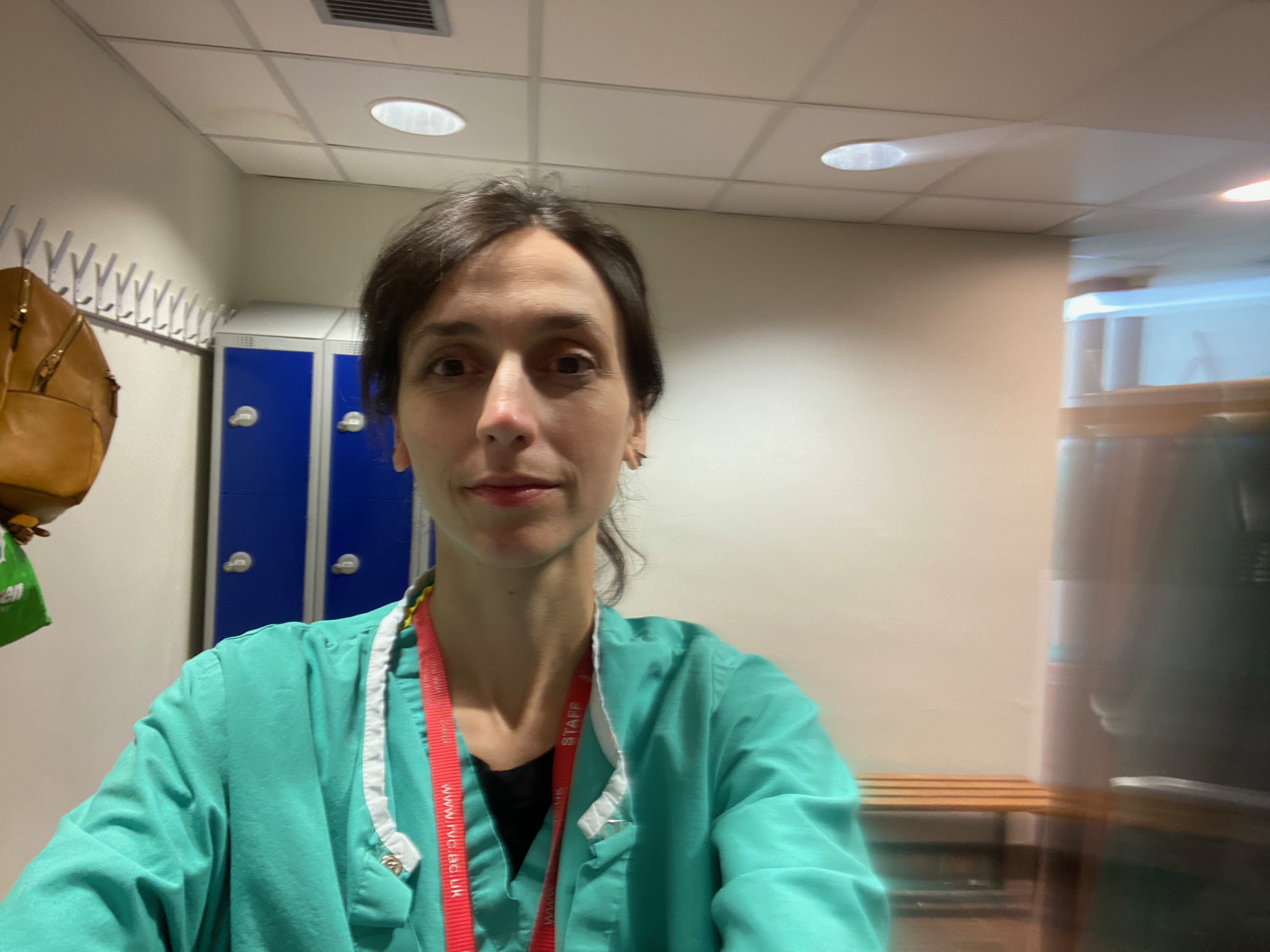
Recommended by: Thaleia Stathopoulou
Thaleia became a diplomate in 2021 after completing her residency at the Royal Veterinary College. She had previously worked at a first opinion small animal practice in London, followed by an anaesthesia internship at the University College Dublin. She is currently co-head of the Anaesthesia service at the Royal Veterinary College, London, and she is enrolled in a part-time PhD program. Her research focuses on mitophagy in Duchenne Muscular Dystrophy and metabolic imaging for skeletal and cardiac muscle.
Commentary
I chose for this month a slightly different article that is a scoping review on the gender biases that women face in anaesthesiology. Even though the data originate from the human field, I believe that is an interesting read and possibly highly relevant to us. Women constitute approximately 80% of the veterinary college student population in several countries (United Kingdom, United States, Canada). However, talking with colleagues we are still under the impression that women are facing gender disparity in leadership and faculty positions. It would be very interesting to conduct a similar study in our field.
The paper is open access, and is a part of the ‘Women in Anaesthesia Special Issue’ and you can access it through the link above.
April 2024
Basic pharmacology of local anaesthetics. A. Taylor and G. McLeod. BJA Education, 20(2): 34-41 (2020)
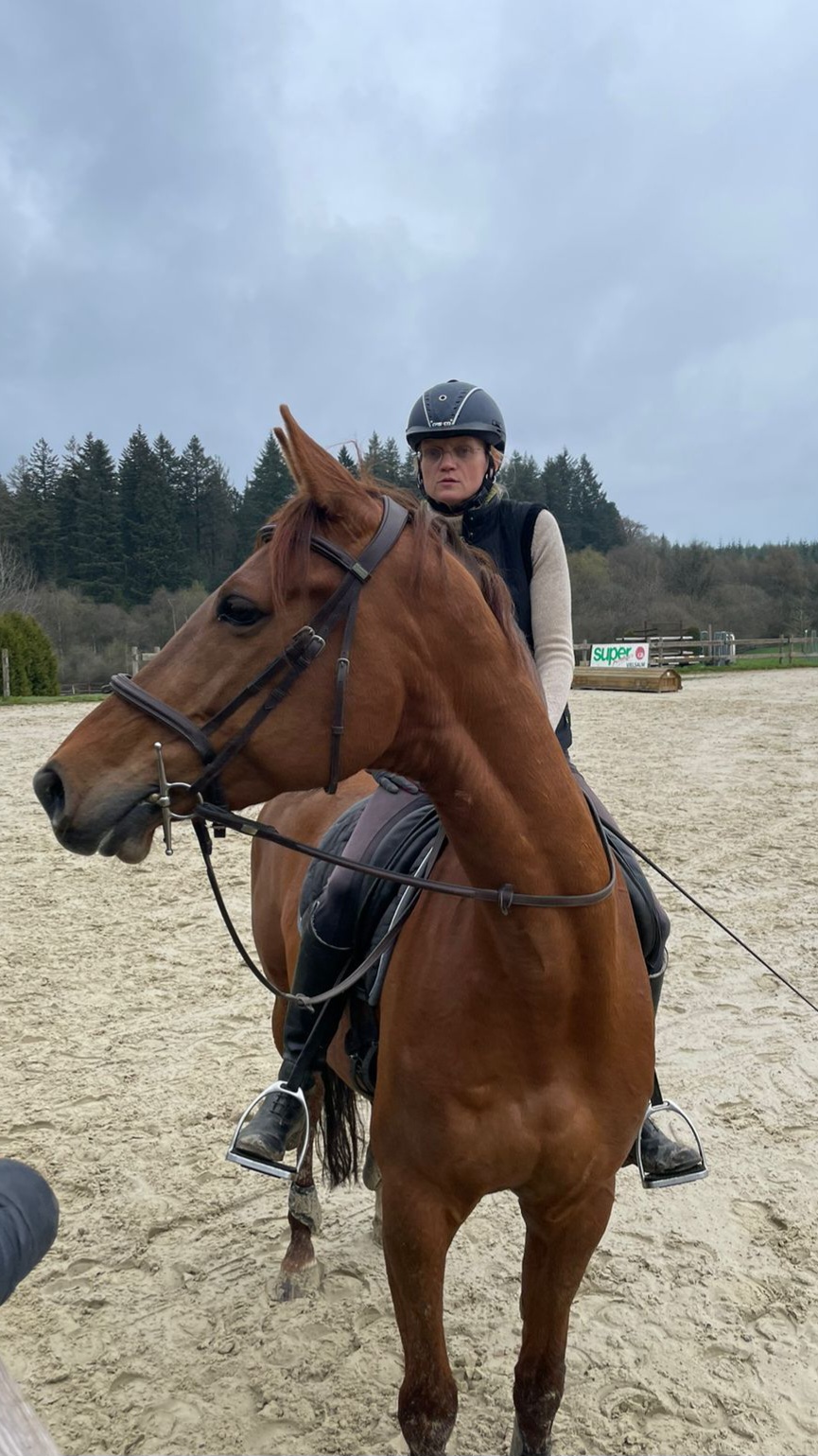
Recommended by: Charlotte Sandersen
Charlotte became a diplomate of our college in 2013 after having worked half of her career as a specialist in equine internal medicine before deciding to focus on anaesthesiology. She is now the head of the veterinary anaesthesiology section at the University of Liege. Her research focuses on inflammation and mitochondrial function and how anaesthetics interact with them. When not busy with doing anesthesia, Charlotte rides her horse or alternatively her motorbike or refurbishes antique furniture.
Commentary
I decided to suggest this article because it is a very easy and enjoyable read, refreshing our knowledge on local anaesthetics. It reminds us of the nerve physiology, the mechanism of action of local anaesthetics, and their pharmacology. This article offers a brief and easy read, and I can tolerate the omission of procaine in this paper, as it is written by human anaesthetists. 🙂
If you do not have access to the article, please contact me and I will send it to you by email: Charlotte.Sandersen@uliege.be

